|
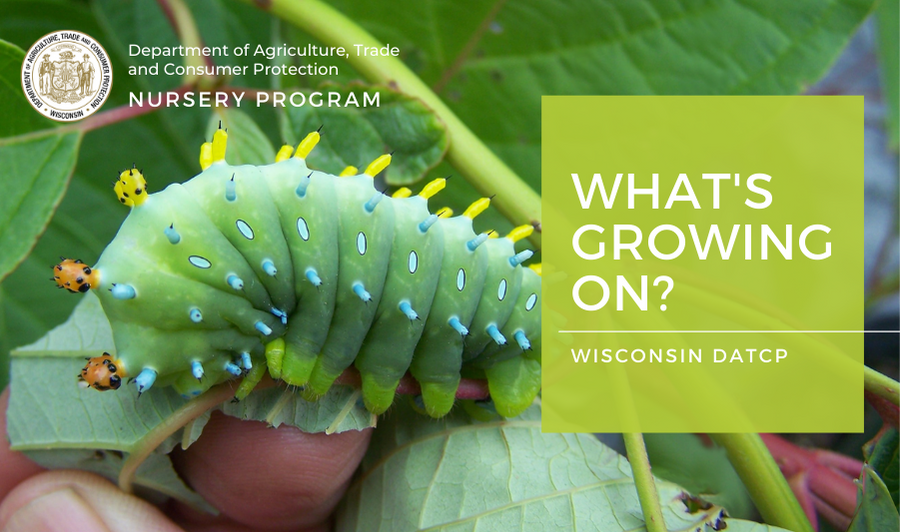 _____________________________________
Dear Wisconsin nurseries, Christmas tree growers, and gardeners:
Growing degree days (GDD)(simple B50) as of September 15 were 1606 in Bayfield, 2023 in Cumberland, 1849 in Medford, 2210 in Hancock, 2427 in Green Bay, 2665 in Racine, 2625 in Madison, 2587 in La Crosse, and 2909 in Dubuque, IA. A few pests in vulnerable-to-treatment stages include flat-headed and round-headed apple tree borer and pine needle scale at 1600-1700, locust borer and fall webworm at 1800-2100 GDDs, and final applications for two-spotted spider mite at 2100-2200 GDDs. Apply final applications for Viburnum crown borer and Zimmerman pine moth at 2700-2900 GDDs and fall applications for cooley and eastern spruce gall adelgid at 2800-3000 GDDs. Other pests soon to be in vulnerable stages for fall applications include spruce spider mites and woolly apple aphids at 2900-3100 GDDs and spruce needle miner at 3000-3200 GDDs.
Please send any feedback, questions, or ideas for future e-news updates to datcpnursery@wisconsin.gov.
Having trouble viewing this email? View it as a Web page.
_____________________________________
|
|
|
Bagworm on arborvitae in Kenosha County | DATCP M. Wensing
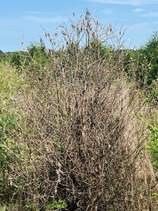
The next time you stop to look at your trees, keep an eye out for some unique insects hiding in bags of their own creation. Feeding on over 50 families of trees, the bagworm (Thyridopteryx ephemeraeformis) has plenty of choices for its next meal, although it often prefers juniper and arborvitae. For most Wisconsinites, this moth poses no threat to their trees, as it isn’t native to the state. However, those living in the southeastern portions of the state may encounter the bagworm from time to time as it comes in from the south by hitching rides on nursery stock and air currents. In 2024, DATCP nursery inspectors detected this pest on nursery stock in Kenosha County. (image left of an arborvitae defoliated by bagworm. Image credit: DATCP M. Wensing)
Bagworm eggs are laid in autumn, inside the female’s bag, where they overwinter. The eggs hatch and caterpillars emerge in late May and early June. The caterpillars leave their parents’ bag and begin feeding on needles and leaves, while also covering themselves in silk. As they feed throughout the summer, they add pieces of foliage and bark to their silk, creating a camouflaged bag that protects them as they move around. Both males and females pupate in their bags before emerging into adults. The adult male leaves his bag to find a female. Female bagworms do not develop wings and lay their eggs in the pupal case they emerged from.
Bagworms populations are known to occasionally grow high in areas of their native range, causing heavy defoliation to trees. Defoliation from bagworms doesn’t typically kill trees unless it occurs year after year. In the case of repeated defoliation, management options include properly timed insecticide applications and hand removal of the bags. Given that Wisconsin doesn’t often see high numbers of this pest, for small populations, hand removal of the bags can be an effective management strategy. For more information on this pest and management options, visit PennState Extension (Bagworm (psu.edu)).
|
_____________________________________
|
|
|
The Wisconsin Invasive Species Council (WISC) has submitted their regulatory recommendations for Wisconsin’s Invasive Species Rule (Ch. NR40, Wis. Admin. Code) to the Wisconsin Department of Natural Resources (DNR). You can find WISC’s letter and list of recommendations on their website here.
WISC is responsible for making recommendations to the DNR regarding classifying invasive species in Ch. NR 40. To accomplish this, the council convened Species Assessment Groups to review and assess species and make recommendations for which species should be included in Ch. NR 40. The council hosted online information sessions earlier this year to present Species Assessment Group recommendations to the public and to gather feedback.
The council reviewed public feedback and sent final recommendations on species classifications for Ch. NR 40 to the department in August. The council advises the DNR to review this list and begin the rulemaking process to revise Ch. NR 40. Once initiated, the department’s rulemaking process takes approximately 30 months to complete and has additional opportunities for public input before the rule is officially updated. You can learn more about the department’s rulemaking process here.
To make sure you receive updates on this and other invasive species issues, you can sign up for the department’s invasive species email list by visiting this webpage.
--Contributing Author Liz Tanner, WI-DNR
_____________________________________
|
|
|
The slightly off-center silvery midrib of JSG leaves is a key to identification | Image Credit: Leslie J. Merhoff, University of Connecticut, Bugwood.org
Japanese stilt grass (Microstegium vimineum) (JSG) is an invasive, warm-season annual grass. It grows 1-3 feet tall and has an aggressive, mat-like growth that creates dense patches and discourages native plants from establishing. It is also a prolific seed producer, with each plant producing up to 1,000 seeds during a growing season that can easily spread over land and water. Japanese stilt grass grows well in many light conditions and is often found in disturbed areas.
History of Japanese stilt grass in Wisconsin
To date, there is only one known population of Japanese stilt grass in the state. In 2020, a population was found on the Coulee Experimental State Forest in La Crosse County by a botanist volunteering for Wisconsin DNR’s Rare Plant Monitoring Program.
Identifying Japanese stilt grass
While grasses can be challenging to identify, Japanese stilt grass has several unique characteristics that distinguish it from common lookalikes:
-
Leaves: The leaves of Japanese stilt grass are short and wide with smooth edges. Each leaf has a distinct silvery midrib that is slightly off-center.
-
Growth pattern: Japanese stilt grass grows in dense mats. Similar native grasses will not form mats but may grow in clumps or single stems.
-
Flowers: Growing in short clusters called spikelets, Japanese stilt grass flowers appear in early to mid-fall and consist of one to three thin branches (spikes) that are 1 to 2 inches in length.
-
Stems: In fall, the stems and upper leaves of Japanese stilt grass turn slight shades of purple to brown, giving the plant its other common name, Nepalese browntop. The texture of the stems is also key for identification. Stilt grass stems are smooth; native lookalikes such as white grass have hair at the leaf nodes and along the stem.
Reporting JSG
If you think you have found Japanese stilt grass, please report it to invasive.species@wisconsin.gov along with location, clear photos of the plant, and any other important details.
--Contributing Authors Erika Segerson-Mueller and Mary Bartkowiak, WI-DNR
_____________________________________
|
|
|
Gouting damage on fraser fir from balsam woolly adelgid | USDA Forest Service, Region 8 Southern, Bugwood.org
Balsam Woolly Adelgid (BWA), Adelges piceae (Ratzeburg), is an introduced, invasive sucking insect pest of true firs (Abies) native to Europe. While European fir trees have evolved resistance to BWA feeding, North American native Balsam and Fraser fir are highly susceptible, with widespread mortality resulting from BWA infestations in the northeast, including the Smoky Mountains National Park. Symptoms of BWA attack include stunting and gouting, or swelling of terminal branches caused by BWA injecting toxic substances during tree feeding causing abnormal tree cell division and hormonal changes; as well adult BWA feeding on the main bole at densities of up to 200 individuals per square inch. Feeding results in needle discoloration, needle loss, and can cause tree mortality in as little as two years. Similar to Hemlock Woolly Adelgid, BWA can be hard to control, as populations comprised only of females reproduce asexually, are protected under waxy wool, and have two to four generations per year. Crawlers are the only mobile form of BWA and can spread infestations to new areas via wind, birds, or mammals.
As recently as three years ago, DATCP decided not to propose an exterior quarantine for BWA after learning about an infestation in Kent County, Michigan that appeared to be confined to Fraser fir on a single residential property. In that case, eradication was deemed successful after infested trees were destroyed and no other BWA was found. At that time, it was also suggested that BWA was not cold hardy enough to overwinter in most areas of the Upper Midwest. Unfortunately, that changed in September 2023 when BWA was detected on 177 trees in three Christmas tree fields in Oceana County, Michigan, near the coast of Lake Michigan. While the Christmas tree grower destroyed all infested trees, and all other trees were thoroughly inspected prior to sale, it is extremely unsettling news.
Later that same month, BWA was detected further inland and north on balsam fir at a residence in Missaukee County, Michigan, where trees had been planted 50 years earlier. By December, hundreds of balsam fir were found to be infested, and staff went from pursuing eradication to delimiting the extent of the infestation. During the same time period, DATCP inspectors detected BWA on fir porch pots sourced from Quebec, Canada. In January 2024, BWA was detected on state forest land in Missaukee County, Michigan, nine miles south of the residential detections.
All in all, recent detections in Michigan mean that Wisconsin’s Christmas trees and native balsam fir may be at serious risk from BWA. DATCP inspectors are checking fields for this and other pests now, but growers and the public should also be on the lookout for BWA and report any suspect sightings to our Pest Hotline at (866) 440-7523 or datcppesthotline@wi.gov.
_____________________________________
|
|
|
Sept. 24, 2024: Understanding and Applying Integrated Pest Management (IPM) Methods
Oct. 8, 2024: IPM for Aquatic Invasive Species: Purple Loosestrife
Nov. 19, 2024: IPM for Arborists and Foresters
Dec. 10, 2024: Deadly Oak Diseases
Jan. 14, 2025: Trees for Bees and Other Pollinators
Jan. 28, 2025: Reducing Pests in Schools Through IPM
Feb. 11, 2025: IPM for Four Key Greenhouse Pests
Feb. 26, 2025: Getting to the Root of the Problem: Myths About Urban Trees and Soil
Mar. 19, 2025: Picking Up Ticks: New Threats, Precautions and IPM Solutions
April 22, 2025: Promoting Pollinators Through Plant Selection
May 13, 2025: Protecting the Public from Illegal and Unregistered Pesticides
_____________________________________
|
|
|
September 30, 2024: Acreage reporting deadline for value-loss and controlled environment crops (except nursery) for the ensuing crop year.
September 30, 2024: Noninsured Disaster Assistance Program closing deadline for Value Loss Crops (Christmas Trees, flowers, ginseng, etc.); forage crops; and fall seeded small grains, garlic, and wild rice.
October 1-4, 2024: World Dairy Expo
November 15, 2024: Fall Acreage Reporting deadline for fall mint and fall-seeded small grains.
_____________________________________
|
|
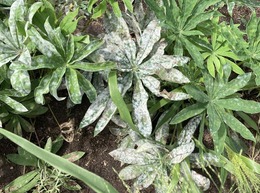 Powdery mildew on lupine in Bayfield Co. | DATCP M. Sanders
|
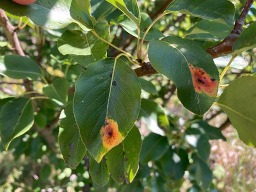 Rust on Callery pear in Kenosha Co. | DATCP G. Meysembourg
|
|
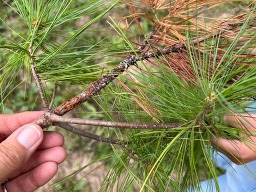 White pine blister rust on pine in Washington, Waushara and Jackson counties | DATCP M. Wensing
|
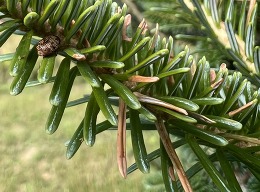 Pine leaf beetle and feeding damage on fir in Waushara Co. | DATCP L. Meils
|
|
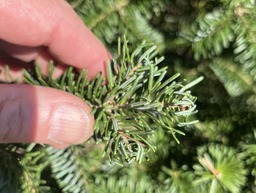 Balsam twig aphid feeding damage on fir in Waushara and Jackson counties| DATCP J. Oestreich
|
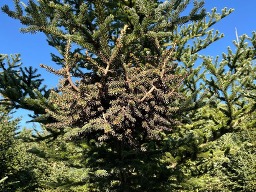 Broom rust on fir in Waushara Co. | DATCP M. Wensing
|
|
|
_____________________________________
|
|
|
|
|